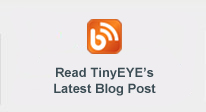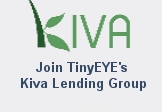How Does TinyEYE Work For School Districts?
TinyEYE’s Student Focused Model gives precedence to your students. As your speech therapy service provider, we collaborate with you to implement a plan for your schools and set the parameters of our service. We build a relationship with our key contacts at each school to prepare for quality therapy for your students. This entails sharing information about the students, informing parents, training your E-helper (school assistant), arranging a schedule, and confirming that your computer system exceeds the minimum requirements for quality online therapy sessions. In the case of technological difficulties, our Tech Support Team is on stand-by and ready to help. TinyEYE oversees all of this for you. We essentially wrap a circle of care around your student. Finally, your student will arrive for his or her first day of online therapy. He or she will be welcomed by your warm, enthusiastic, talented TinyEYE Speech-Language Pathologist who will start the on-screen adventure.
There will be smiles. There will be high fives. There will be success.
 TinyEYE's Online Speech Therapy Process
TinyEYE's Online Speech Therapy Process
1. Assessments and IEP Delivery
If assessments are already completed, IEP information will be forwarded to TinyEYE staff so therapy program and schedule can be developed. If assessments aren't complete, TinyEYE can work with school district to co-ordinate online and in-person assessments.
2. Consent Forms
Each student participating in the TinyEYE program will be asked by parent/caregiver to sign a consent form to acknowledge the child will be participating in online speech therapy telepractice.
3. Technical Checks and E-Helper Training with Participating Schools
Each school will ensure the computer/s being used for TinyEYE meet the technical requirements (see the below link "Technical Requirements" for more info) and to schedule a mock session. One of TinyEYE's technical support staff will connect with the E-Helper (teacher aide or SLPA) at the school to ensure online therapy is possible and to show the E-Helper how the software works and what to expect.
4. Therapy Begins
Once the schedules are in place, consent forms signed, and computer checked, online speech therapy with TinyEYE begins!
 Technical Requirements
Technical Requirements
Before working with TinyEYE, your district will need to ensure students have access to a computer connected to high-speed internet in a quiet, well lit location. A web camera and headset with an attached microphone are also needed for students to communicate with our online SLPs.
Hardware:
* Computer
* Web camera with 15 FPS (frames per second) capture rate (built in or separate)
* Headset with Attached Microphone (analog or USB)
* High-speed internet connection (150 kbps minimum)
If you have Windows XP:
* 2 GB of RAM
* P4 with 2GHZ processor or equivalent
If you have Windows Vista / Windows 7:
* 3 GB of RAM
* P4 with 3GHZ processor or equivalent
If you have Mac OS X 10.4 (Tiger) or 10.5 (Leopard):
* 2 GB of RAM
* 2 GHZ processor or equivalent
Our SLPs openly communicate and work to empower your staff, which builds capacity in your schools and enhances your learning-enriched environment.
* Your teachers have focused support and helpful information readily available through TinyEYE’s online tools.
* Ongoing communication between your TinyEYE SLP and your school to ensure the program is meeting expectations for the students.
* Our SLPs are available to supervise support staff and to consult with teachers as needed.

|
|
![]() TinyEYE's Online Speech Therapy Process
TinyEYE's Online Speech Therapy Process








